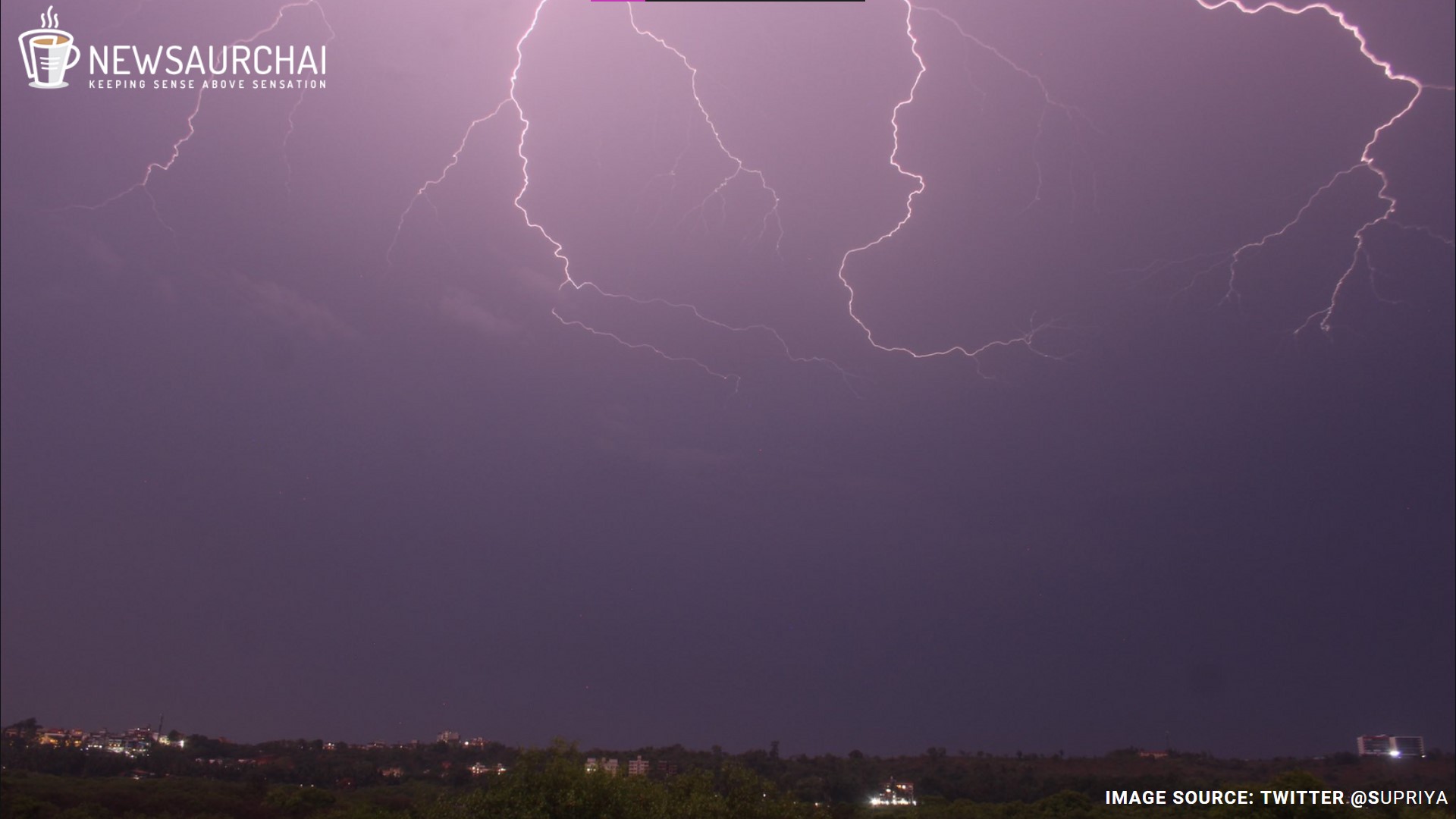
The cyclone season has intensified over the North Indian Ocean. Another low-pressure system, forming over the Bay of Bengal, is set to morph into a cyclone by the end of next week. This comes less than a week after Cyclone Tauktae decimated the West Coast of India. The storm is set to hit the coast of West-Bengal and Odisha the hardest. Both states have begun initiating disaster management protocols for the impending cyclone.
The Indian Meteorological Department (IMD) said on Thursday that the cyclone is expected to make landfall across the coast of West Bengal and Orissa on the morning of May 26. Early forecasts revealed that the low-pressure area is likely to be formed over the North Andaman Sea and its adjoining East-Central Bay of Bengal area on May 22.
The low-pressure system is likely to escalate into a depression by May 23 and a cyclonic storm by May 24. This was speculated by RK Jenamani, a senior scientist at the National Weather Forecasting Centre, IMD on Wednesday. Once the storm intensifies into a cyclone, it will be named ‘Yaas’ as per the naming guidelines by the World Meteorological Organisation (WMO).
Both the states are expected to receive heavy rainfall between May 22-26. The cyclone is likely to trigger coastal flooding and a storm surge. However, its intensity is predicted to be far less than that of Cyclone Amphan – which resulted in 128 death and loss of infrastructure worth 1 lakh crores. The low pressure will potentially cause moderate rainfall across the Andaman and Nicobar Islands, expected to be isolated over the weekend.
Warnings have been issued across districts in both states with a few areas being put on red alert. The IMD said that the waters are expected to be boisterous over the Andaman sea and the east-central Bay of Bengal on May 23. A warning has been issued to fishermen in the deep-sea to return to the coast by May 23. The IMD advised them to not venture into the central Bay of Bengal between May 23-25. The northern area of the Bay and off the coast of Odisha are also off-limits between May 24-27.
The coastal area of both states is most likely to face the brunt of the rainfall as the storm makes landfall. The IMD has forecasted that the coasts of Odisha, West Bengal, and Bangladesh are likely to experience ferocious wind speeds of over 60k/m per hour from Tuesday, May 25. The cyclone is also expected to trigger Thunderstorms in Kolkata.
With the low-pressure system still under formation, the accurate track and the potential landfall region are difficult to determine. Forecasts suggest that the peak intensity of the storm will likely be a Very Severe Cyclonic Storm. It is expected to produce maximum wind speeds of up to 130k/m per hour on the West Bengal coast on May 26.
Both West Bengal and Odisha have begun ramping up infrastructure around the coastal areas of their respective regions. On Friday, Odisha’s Special Relief Commissioner (SRC), Pradeep Jena, held a meeting with the secretaries of all departments of the state government and officials of the IMD to ensure preparedness. All the departments under the state Government have been asked to stay prepared to face an impending crisis.
Meanwhile, West Bengal is planning to increase the number of disaster shelters in its southern districts. These districts are likely to face the storm at its most violent. West Bengal is currently overwhelmed by an exponential surge in Covid-19 cases. Some of the areas with a high case burden are expected to be left devastated by the cyclone. The state and district level bodies have met several times since Wednesday to discuss the actions to be taken in the wake of Cyclone ‘Yaas’.
Senior officials of the districts facing a high burden of Covid-19 cases have been put on alert. During an emergency meeting, Chief Minister Mamata Banerjee asked the district officials to carry out evacuation procedures in line with Covid-19 prevention protocols. The Chief Minister told the officials to ensure the use of masks and sanitizers and to keep the shelters sanitized. The disaster shelters are also equipped with oxygen and medical support.
On Friday, the centre, too, issued guidelines to bolster health infrastructure across the east coast. The Government warned that the ongoing Covid-19 crisis may aggravate in the aftermath of the cyclone. Camps and shelters will become more prone to waterborne, airborne, and vector-borne diseases.
The centre has asked the states of Andhra Pradesh, Odisha, Tamil Nadu, West Bengal, and the administrator of Andaman and Nicobar Islands to follow the guidelines issued by the IMD. They also promised to extend all the support required to manage the situation.
The months of April and May usually witness the formation of cyclones, in both the eastern as well as western coasts. Last year, the coasts witnessed two decimating cyclones – Amphan and Nisarga – which had a lasting impact on the population. Although an Amphan-like intensity is not expected, Sunitha Devi, a cyclone specialist at IMD, did not rule out “Cyclone Amphan-like intensification”. She, however, added that the speed at which the system is moving would restrict potential aggravation.
The cyclone may also advance towards the Sunderbans in Bangladesh, although it is too early to confirm. The Sunderbans has witnessed devastating cyclones – Aila (2009), Bulbul (2019), and Amphan (2020) – that have harshly impacted the region.





